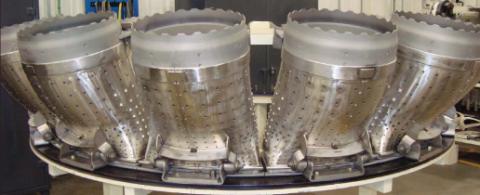15 minutes could save on turbine insurance

Who would have thought that the Winsurance field could provide insight into the operations and maintenance of turbomachinery? Yet that is exactly what occurred at the 39th annual Combustion Turbine Operations Technical Forum (CTOTF) Spring 2014 meeting in Palm Beach Gardens, Florida.
“Top-notch maintenance management, excellent condition monitoring and accurate life assessment are vital for good insurance rates,” said Donald Schubert, Vice President for Global Engineering Practice at insurance broker, Marsh Inc., during his keynote on opening day.
He was followed by dozens of sessions and panels covering topics such as rotor life extension, alternatives to OEM Long Term Service Agreements (LTSAs), cyber security, blade repair, how to deal with opposition to CT projects, environmental regulatory concerns, business markets, high voltage and electrical, Heat Recovery Steam Generators (HRSGs), instrumentation and control, and plant winterization.
As a young engineer, Ed Sundheim of Essential Power and Executive Vice Chair for CTOTF Program Administration recalled being able to call upon two full floors of engineering experts for support. “Now we are very thin on such resources yet the level of technology has risen exponentially,” said Sundheim. “Most people coming in new will not yet have gotten their hands dirty on turbomachinery and they have to deal with a very steep learning curve.”
CTOTF encompasses all areas that influence the CT, such as transformer failures, for example. “Transformers need to be protected and maintained well,” said Sundheim. “If one goes down, it can take the plant out for 18 months as that is the typical lead time on a new one.”
Insurance figures reinforced this sentiment. When one investigates the equipment itself, Schubert’s data indicate that heavy frame turbines make up 28 percent of claims followed by boilers at 18 percent, generators at 16 percent, steam turbines 13 percent, aeroderivatives 11 percent, transformers 10 percent and others at 4 percent.
Within these categories, though, there is plenty of change. In particular, Schubert noted that generator and transformer losses are on the rise while aeroderivative and boiler claims are dropping.
“We have seen many large transformer losses globally, some of which were followed by fires which caused even more destruction,” he said. “The increased use of fast cycling in plants appears to be a major factor in these incidents.”
On the steam turbine side, the numbers showed a greater incidence of overspeed incidents, especially for large machines. This included nine non-catastrophic incidents in the U.S (one with a bowed shaft) and four catastrophic overspeed events in other countries.
Emergency lube oil system and control valve failures were behind some of these situations. Schubert recommended redundant components in these systems, changing from mechanical bolts to electrical shutdown systems and upping the operations and maintenance (O&M) game in these areas, as well in battery maintenance.
Further root causes, added Schubert, included cracked low-pressure blades. He highlighted superficial analyses of blade damage leading to catastrophic failures before the next maintenance interval. The moral is clear: be very careful about life extension actions and perform multiple tests to verify the actual extent of detected blade anomalies.
More in March/April issue of Turbomachinery International
Fuel Flexibility in Heavy-Duty Gas Turbines: A Key Driver for Energy Transition
March 13th 2025From Hydrogen to HVO, Mr. Federico Bonzani, Chief Technology Officer of Ansaldo Energia, describes the fuel flexibility state-of-the-art solutions of the Company to meet the actual and future needs of power generation industry.